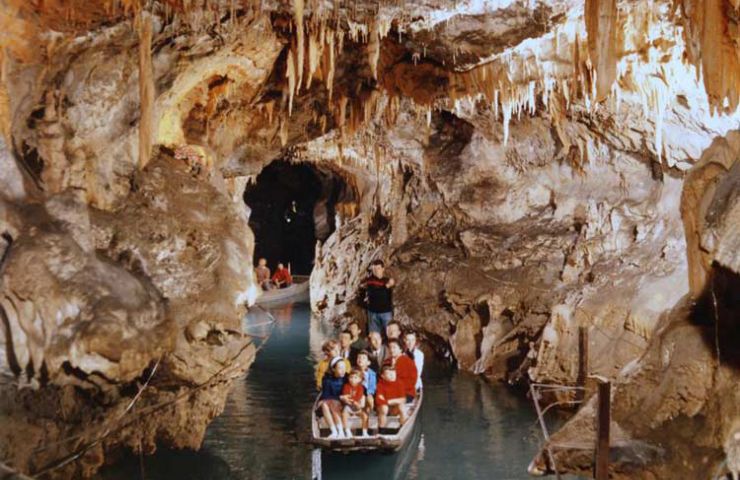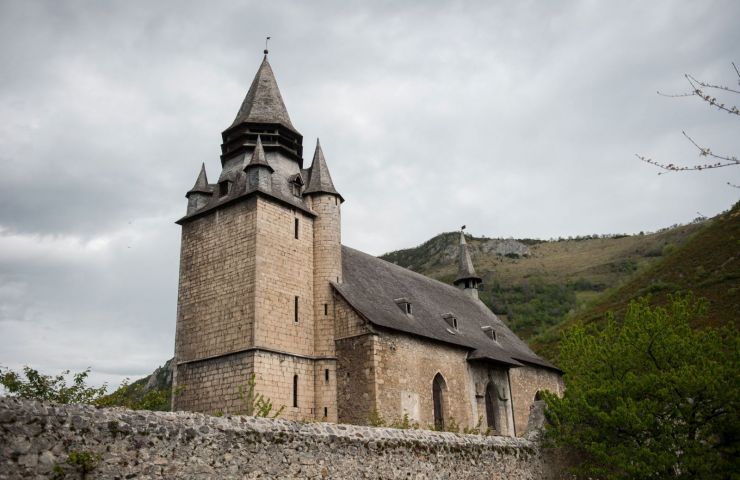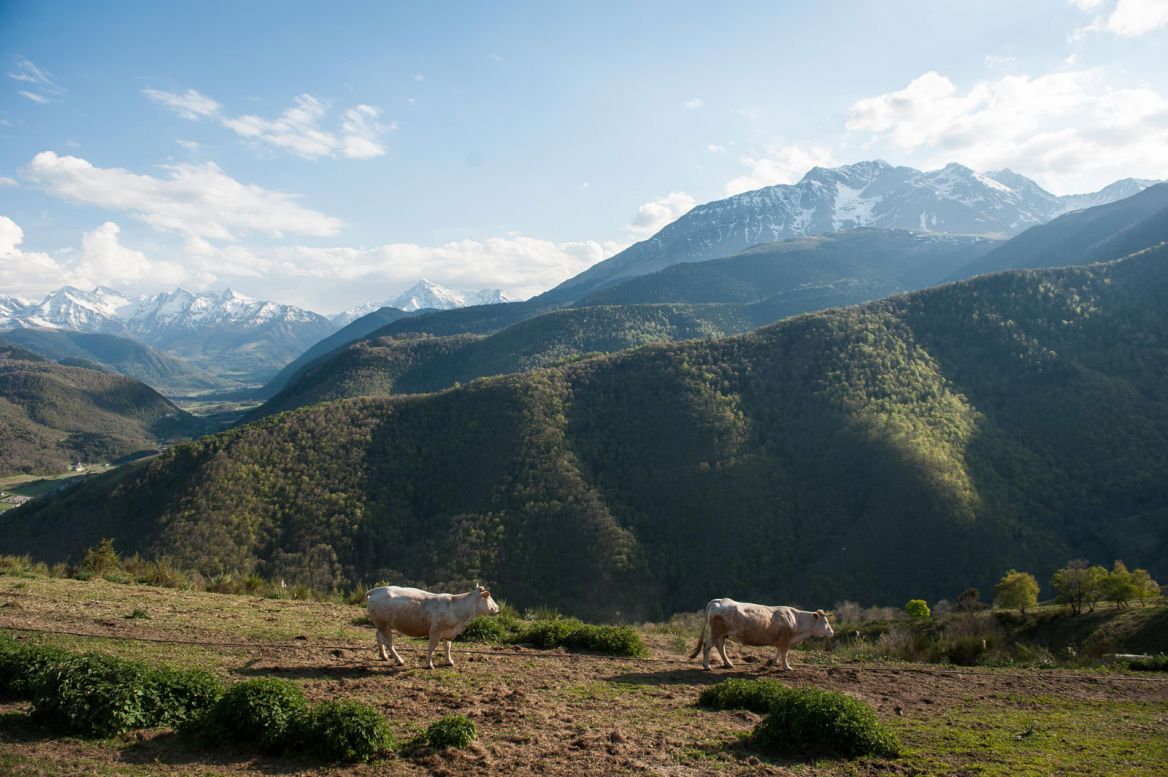- Home page
- Tourism
- Discover
- Visit Toulouse region and the French Pyrénées
- Hautes Pyrénées - Haute-Bigorre
- Visit Toulouse region and the French Pyrénées
- Discover
- Tourism
Haute-Bigorre, following the Adour river
BAGNÈRES DE BIGORRE, THERMAL TOWN
Situated at the foot of the pic du Midi and cols d’Aspinand Tourmalet, this sub-prefecture of the Hautes-Pyrenees has been prosperous due to the success its spas during the 19th century.
Interesting ruins can still be seen in the old quarter of the town such as the 15th century Tower of the Jacobins, a 34 metres high (111 Feet) building, a vestige of a convent destroyed during the Revolution. Beautiful art deco buildings, superbly flowered balcony facades called bigourdanes (Awarded 3 flowers by the label “villes et villages fleuris”. The Floral town / village label is awarded each year by the National Council of Towns and Villages in Bloom (Conseil National des Villes et Villages Fleuris) after a competition that takes account of certain criteria such as landscape and plant heritage, floral displays, respect for the natural environment and living environment.), half timbered houses, mullioned windows and beautiful Renaissance gates can also be seen.
The Church Saint Vincent, with its 40 m (131 feet) high bell gable from the 14th century. The allées des Coustous, designed at the end of 17th century in the location of the former fortifications, have created a busy and friendly place in the shade of the lime trees.
Between the thermal spas and the Casino sits the Art Museum in Salies, with its art deco façade it houses a collection of the greatest Parisian salon paintings from the first half of the 19th century and some water colours from Blanche Odin, the famous water colourist, as well as popular art artefacts.
Another museum is the one dedicated to marble, which made the town prosper during the 20th century. The museum is installed in the former spa of Salut, at the heart of a landscaped garden, which also houses the botanical conservatory. More than 300 marbles of various origins have been collected and the epic tale of the marble of the Pyrenees, from the Roman period until the 19th century is presented.
CAMPAN VALLEY, THE VALLEY WITH TWO FACES
Here between opposing landscapes, with the Adour River and its verdant valley where, where agriculture dominates on one side and limestone peaks on the other, sit the villages of Asté and Beaudéan.
In Asté you can visit the caves of Médous by boat, one of the most beautiful caves for its formations and draperies. Asté was the home of the famous Jean Ferrère (1620-1705), a great Pyrenean Baroque master and founder of an entire dynasty of sculptors whose legacy can be found in the churches of Comminges and Bigorre.
Baudéan is the birth place of Dominique Larrey (1766-1842), head surgeon of the Napoleon’s armed forces, creator of the « flying ambulance» (The flying ambulances were horse drawn wagons for collecting and carrying the wounded from the battlefield to base hospitals). Baudéan is also the starting point of many hiking trails, between lakes and water falls.
Campan has lots of charm with its 17th century covered market, its 16th century fountain, its church with four gables, its cloister. Strange characters invade Campan from July to September: the « Mounaques ». These life size dolls are made with rags and straws, dressed with clothes and exhibited in the streets, on the balconies or in the gardens. According to the old tradition when weddings would occur in the village, the groom to be had to pay a debt to the youngsters of their sweetheart’s village, upon pain of charivari (hullaballoo) and Mounaques around its houses.
The “Maison des Amis de Mme Campan” (Mrs Campan’s friends house) conveys the Valley’s heritage. Jeanne Campan (1752 -1822) was a French educator, writer and lady in waiting. In the service of Queen Marie Antoinette before and during the French Revolution, she was afterwards headmistress of the first “Maison de l’éducation de la Légion d’honneur” as appointed by Napoleon in 1807 (Maison de l’éducation de la Légion d’honneur: French secondary schools set up by Napoleon and originally meant for the education of girls whose father, grandfather or great-grandfather had been awarded the Légion d’honneur. Access is still by hereditary right).
Caves of Médous
Caves of Médous
The Caves of Médous are divided into two parts: a lower gallery called "Dry Gallery" and an upper one "Wonder ...
809 m - Asté
Église Saint-Jean-Baptiste de Campan
Église Saint-Jean-Baptiste de Campan
The Saint-Jean-Baptiste church in Campan, located in the Hautes-Pyrénées department, is a remarkable historical ...
2,8 km - Campan
Bagnères-de-Bigorre
Bagnères-de-Bigorre
Bagnères-de-Bigorre is a town located in the heart of the Pyrenees, in the Hautes-Pyrénées department, in the ...
2,9 km - Bagnères-de-Bigorre
COL D’ASPIN, PANORAMA of the PYReNeEs mountains
Between the Aure Valley and the Campan Valley, the col d’Aspin (1,489 m – 4,885 feet) is part of the famous “Route des Cols” (Mountain roads). It is a legendary steep and narrow road used each year by the Tour de France.
PIC DU MIDI, EMBLEM OF BIGORRE
The Pic du Midi (altitude 2,877 m (9,439 feet) is a mountain in the French Pyrenees and it is famous for its astronomical observatory created in 1881. Reserved for scientists to observe the moon and the sun, it has the most beautiful panoramic terraces in the Pyrenees mountains allowing you to see the peaks in a 300 Km radius (Vignemale, Mont Perdun, Pic d’Aneto). There is also a Museum revealing the history of the pic and the building of the astronomical observatory.










